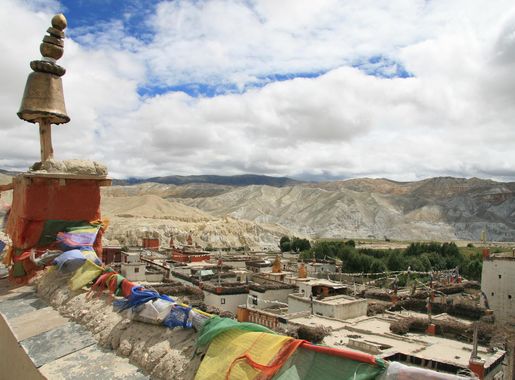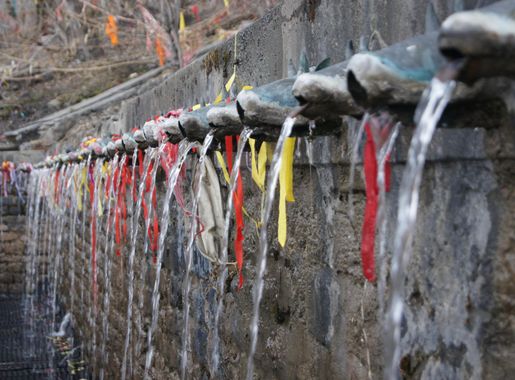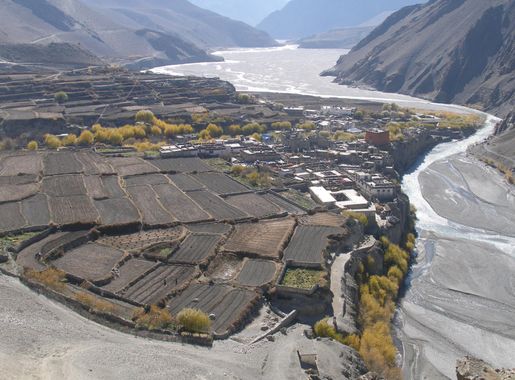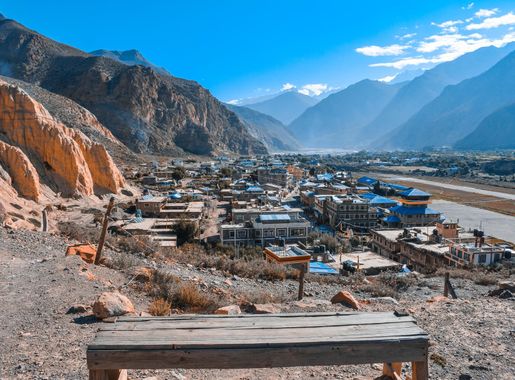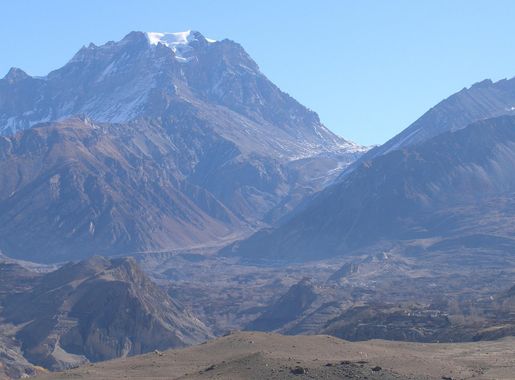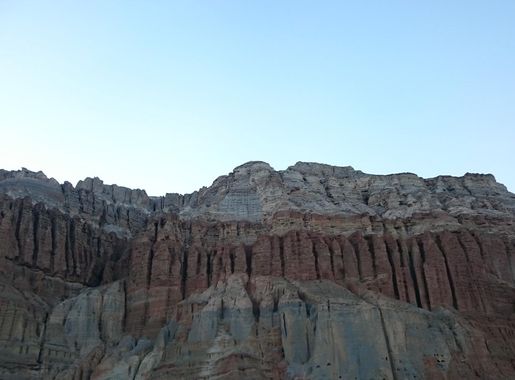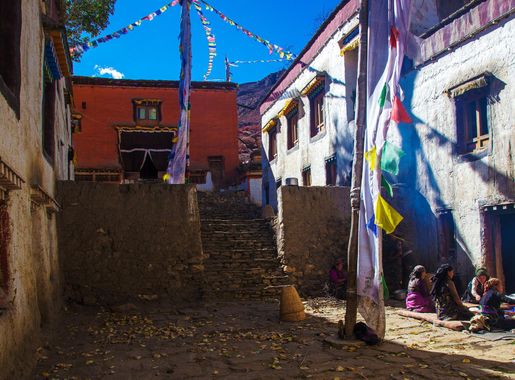
Mystical Mustang: The Hidden Kingdom of Nepal
Discover the hidden kingdom of Mustang in Nepal, where ancient history, stunning landscapes, and rich Tibetan culture create a unique and mystical travel experience.
Nestled in the northern region of Nepal, Mustang is a remote and captivating destination that offers a unique blend of natural beauty, rich culture, and ancient history. Once an independent kingdom, Mustang is now a part of Nepal but retains its distinct identity and charm. The region is known for its stark landscapes, with deep gorges, rocky cliffs, and high-altitude deserts that create a surreal and otherworldly atmosphere. Mustang is an ideal destination for adventure seekers and history enthusiasts alike. The trek to the ancient capital of Lo Manthang is a journey through time, with centuries-old monasteries, cave dwellings, and intricate Tibetan-style architecture dotting the landscape. The vibrant local culture, deeply rooted in Tibetan Buddhism, adds to the allure of this hidden gem. Visitors can experience traditional festivals, witness colorful prayer flags fluttering in the wind, and enjoy warm hospitality from the local communities. Despite its remote location, Mustang is accessible to travelers, especially during the trekking season from March to November. The region's isolation has preserved its unique way of life, making it a rare and precious destination for those seeking an off-the-beaten-path experience. Whether you're exploring the ancient caves of Chhoser, marveling at the stunning views from the passes, or simply soaking in the serene beauty of the landscape, Mustang offers an unforgettable adventure.
Local tips in Mustang
- Best time to visit is from March to November when the weather is favorable for trekking.
- Ensure you have the necessary permits, including the Annapurna Conservation Area Permit (ACAP) and the Restricted Area Permit (RAP).
- Pack warm clothing, as temperatures can drop significantly, especially at night.
- Carry sufficient cash, as ATMs and card facilities are scarce in the region.
- Respect local customs and traditions, particularly when visiting monasteries and interacting with locals.
Mystical Mustang: The Hidden Kingdom of Nepal
Nestled in the northern region of Nepal, Mustang is a remote and captivating destination that offers a unique blend of natural beauty, rich culture, and ancient history. Once an independent kingdom, Mustang is now a part of Nepal but retains its distinct identity and charm. The region is known for its stark landscapes, with deep gorges, rocky cliffs, and high-altitude deserts that create a surreal and otherworldly atmosphere. Mustang is an ideal destination for adventure seekers and history enthusiasts alike. The trek to the ancient capital of Lo Manthang is a journey through time, with centuries-old monasteries, cave dwellings, and intricate Tibetan-style architecture dotting the landscape. The vibrant local culture, deeply rooted in Tibetan Buddhism, adds to the allure of this hidden gem. Visitors can experience traditional festivals, witness colorful prayer flags fluttering in the wind, and enjoy warm hospitality from the local communities. Despite its remote location, Mustang is accessible to travelers, especially during the trekking season from March to November. The region's isolation has preserved its unique way of life, making it a rare and precious destination for those seeking an off-the-beaten-path experience. Whether you're exploring the ancient caves of Chhoser, marveling at the stunning views from the passes, or simply soaking in the serene beauty of the landscape, Mustang offers an unforgettable adventure.
When is the best time to go to Mustang?
Iconic landmarks you can’t miss
Upper Mustang, Nepal
Explore the enchanting landscapes and rich Tibetan culture of Upper Mustang, Nepal, a hidden gem for adventurous travelers.
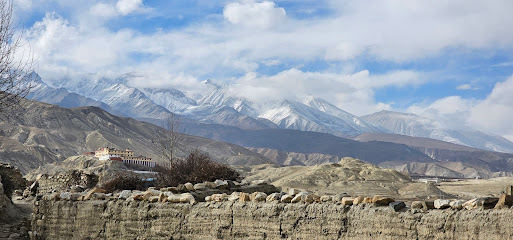
Chele Village
Explore Chele Village in Nepal, a breathtaking tourist attraction nestled in the Himalayas, rich in culture and natural beauty.
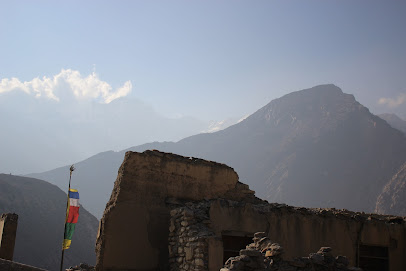
Ri thoen-pa view tower
Experience the serenity and breathtaking panoramic views at Ri Thoen-Pa View Tower, a hidden gem along the Kali Gandaki Corridor in Nepal.

Nyamdok
Discover Nyamdok, Chhonhup's stunning historical landmark, where rich culture meets serene beauty in an unforgettable travel experience.
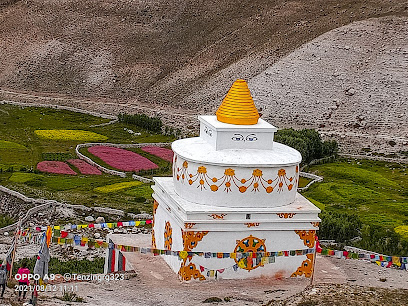
नेपाल सीमा प्रारम्भ
Discover the rich cultural heritage of Nepal Simar Praramvabh, a historical landmark nestled in the stunning landscapes of Zhongba County.
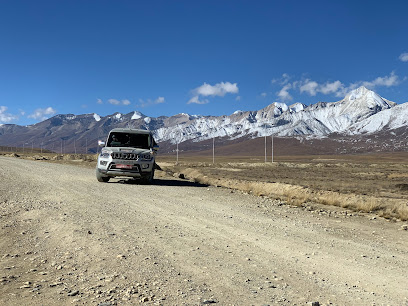
Unmissable attractions to see
Devi's Fall Pokhara
Experience the breathtaking beauty of Devi's Fall in Pokhara – a stunning waterfall surrounded by lush landscapes and adventure.
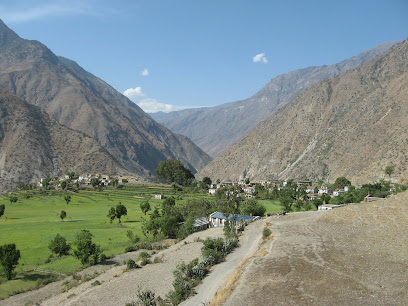
Chamere Gufa
Explore the mysterious Chamere Gufa in Pokhara, Nepal – a geological wonder and a spiritual sanctuary waiting to be discovered.
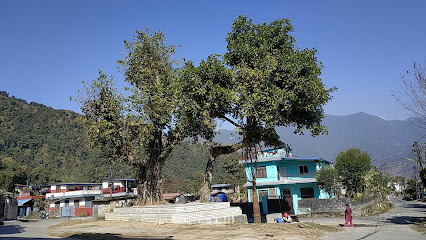
Gurkha Memorial Museum
Explore the inspiring history of the Gurkha soldiers at the Gurkha Memorial Museum in Pokhara, a must-visit destination for history enthusiasts.
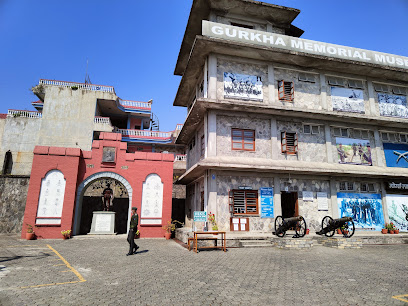
Team 5 Nepal paragliding
Soar above the breathtaking landscapes of Pokhara with Team 5 Nepal Paragliding for an unforgettable adventure in the heart of the Himalayas.
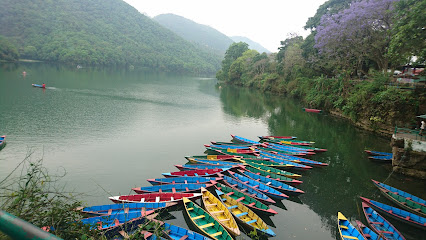
Tutunga View Point
Experience breathtaking views and serene landscapes at Tutunga View Point, a must-visit tourist attraction in Pokhara, Nepal.

Kahunkot Viewpoint
Discover the tranquility and breathtaking scenery of Kahunkot Viewpoint in Pokhara, a perfect escape for nature lovers and photographers.
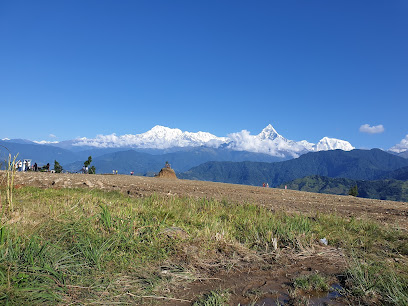
Pokhara Planetarium & Science Center (Mirror Maze House)
Discover the universe at the Pokhara Planetarium & Science Center, featuring engaging exhibits and the captivating Mirror Maze House for all ages.
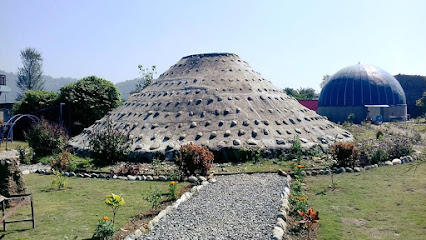
Yamdi याम्दी
Experience the breathtaking beauty of Yamdi, a serene tourist attraction near Pokhara, perfect for nature lovers and adventure seekers.
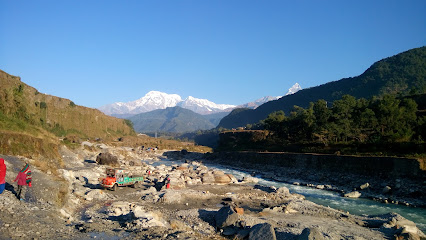
Lovely Hill
Experience breathtaking views and serene walking trails at Lovely Hill in Pokhara, a perfect retreat for nature lovers and adventure seekers.
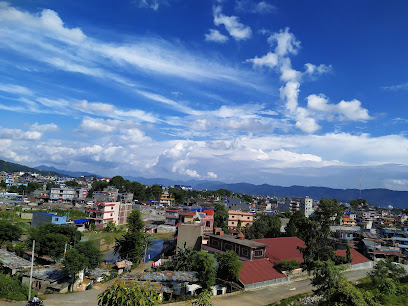
Tourism Pokhara
Explore the natural wonders and adventurous spirit of Pokhara, where stunning lakes meet majestic mountains in the heart of Nepal.

Haredanda View Point
Experience breathtaking views of the Annapurna range at Haredanda View Point, a serene escape in the heart of Pokhara, Nepal.
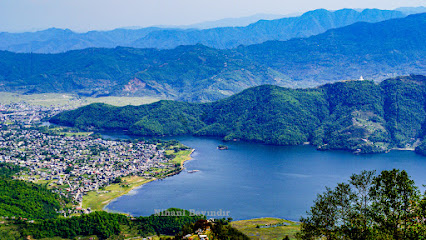
Hand statue
Discover the Hand Statue in Pokhara – a stunning symbol of peace set against the breathtaking backdrop of the Himalayas, perfect for memorable photos and cultural exploration.
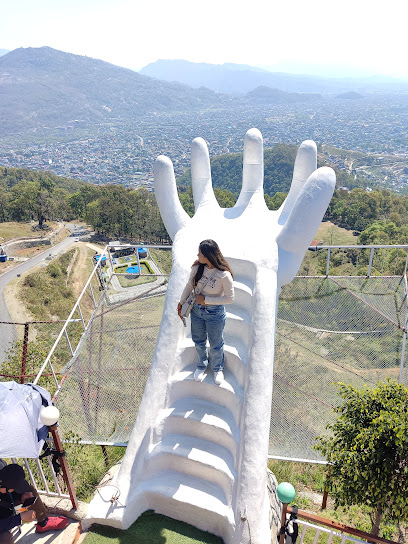
बराह ताल भकुण्डे (Baraha Lake Bhakunde)
Explore the breathtaking beauty of Baraha Lake Bhakunde, a serene escape surrounded by nature's wonders and rich local culture.
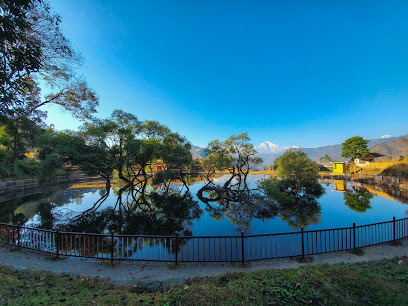
Royal Jharana
Explore Royal Jharana, a breathtaking natural wonder in Kalika, Nepal, featuring stunning twin waterfalls and lush landscapes for a tranquil getaway.
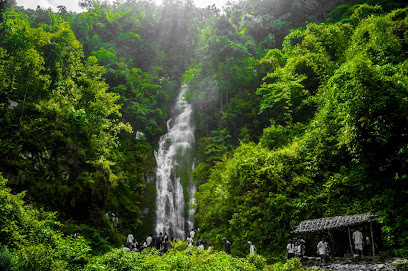
Fishtail view spot, Dhital
Discover the stunning beauty of Fishtail Mountain at Dhital's breathtaking viewpoint, a perfect spot for nature lovers and photographers.
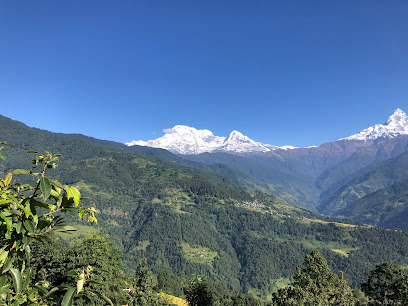
Essential places to dine
Basundhara Mustang Thakali Chulo & Multi Cusine
Savor the authentic taste of Thakali cuisine at Basundhara Mustang Thakali Chulo in Kathmandu – perfect for families seeking delicious local dishes.
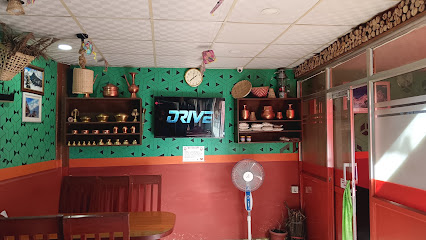
Mustang House Thakali Restaurant
Discover authentic Thakali flavors at Mustang House - a cozy dining spot in Itahari showcasing rich Himalayan cuisine.
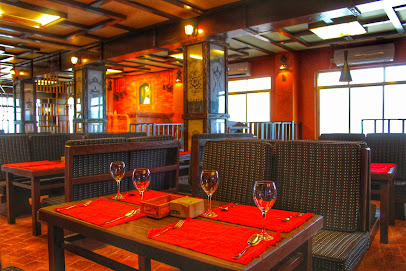
Monkey Hill Huts and Restro
Discover family-friendly dining at Monkey Hill Huts and Restro, where stunning views meet delicious cuisine in Lahachok.
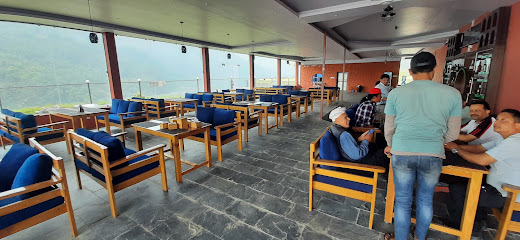
Mustang Lete Hotel & Thakali Kitchen
Experience authentic Thakali cuisine at Mustang Lete Hotel & Thakali Kitchen in Dana, Nepal—where every meal is steeped in tradition and flavor.
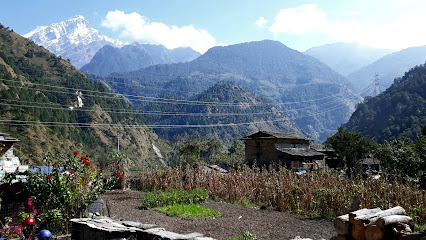
Chusang
Experience authentic Nepali cuisine in Chusang's charming restaurant, where every dish tells a story amidst breathtaking Himalayan scenery.
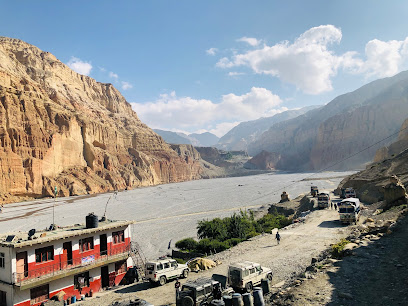
Shiva parbati bhanchha ghar and Restaurant
Discover authentic Nepalese flavors at Shiva Parbati Bhanchha Ghar & Restaurant in Namarjung - a must-visit culinary gem.
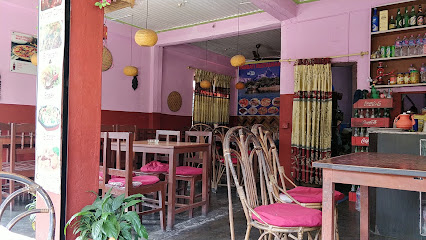
Mustang Gate Chaile Restaurant
Experience authentic Nepali cuisine at Mustang Gate Chaile Restaurant in Pokhara—where every dish tells a story.
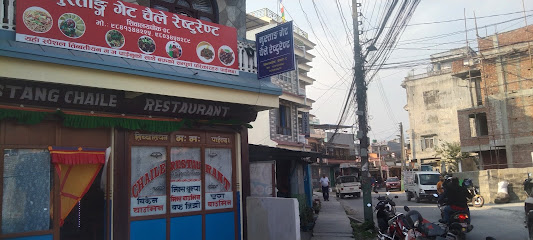
Mustang Point Restaurant
Experience authentic Nepali cuisine amidst breathtaking views at Mustang Point Restaurant in Gaindakot.
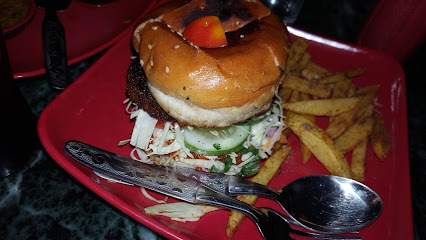
The Kailash Hotel, Tsarang, Mustang, Nepal
Experience authentic Nepalese cuisine with breathtaking views at The Kailash Hotel in Tsarang, Mustang - a must-visit culinary destination.
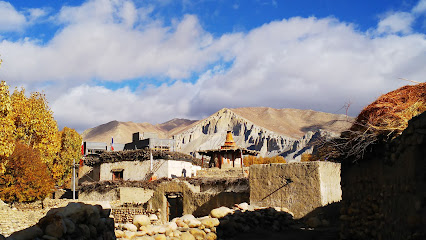
Bagaincha Cafe and Garden Restaurant
Discover delightful local flavors at Bagaincha Cafe & Garden Restaurant in Jomsom – a serene dining experience amidst stunning mountain views.
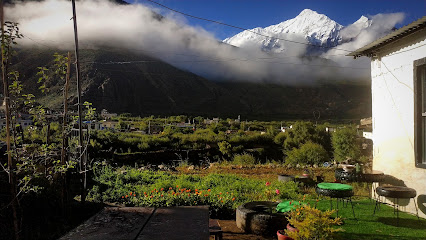
Moon Light Tandoori & Cottage
Experience authentic Nepali and Indian flavors at Moon Light Tandoori & Cottage in Jutpani.
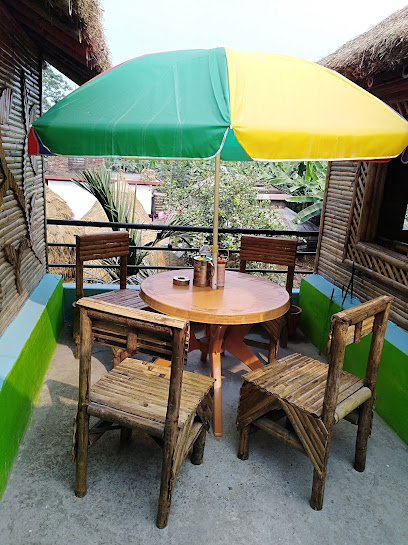
Valley Top Restaurant
Discover authentic Nepali cuisine with breathtaking views at Valley Top Restaurant in Jutpani—an unforgettable dining experience awaits.
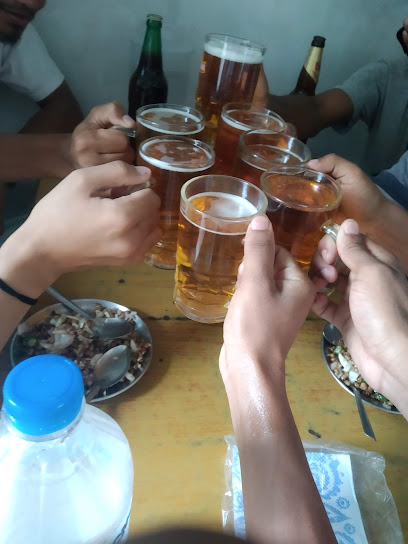
Mustang Lete hotel and restaurant
Discover the flavors of Nepal at Mustang Lete Hotel and Restaurant in Lumle - where authentic cuisine meets stunning views.
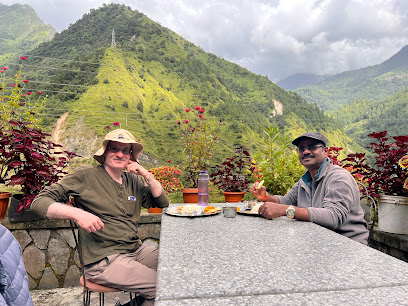
Lamanthang,upper mustang
Discover authentic Nepali cuisine at Lamanthang in Upper Mustang—where breathtaking views meet rich culinary traditions.
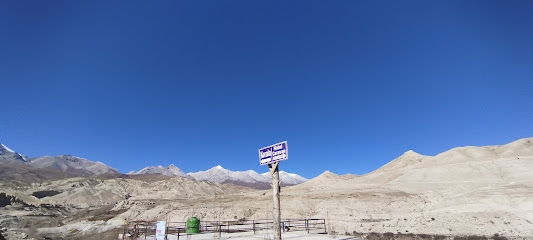
Mustang Restaurant
Experience authentic Asian cuisine at Mustang Restaurant in Kathmandu's Boudhha - where flavor meets tradition.
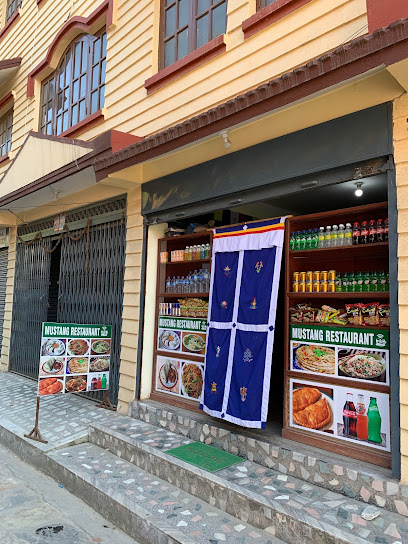
Markets, malls and hidden boutiques
Our mustang fancy jomsom
Discover the vibrant blend of traditional and modern women's fashion at Our Mustang Fancy Jomsom in the heart of Nepal.
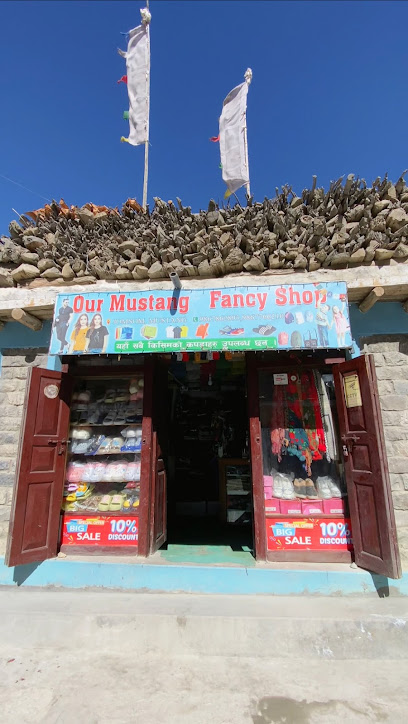
जितमन राइस् मिल
Explore unique handcrafted home goods at जितमन राइस् मिल in Namarjung, a true reflection of Nepal's rich culture and artistry.
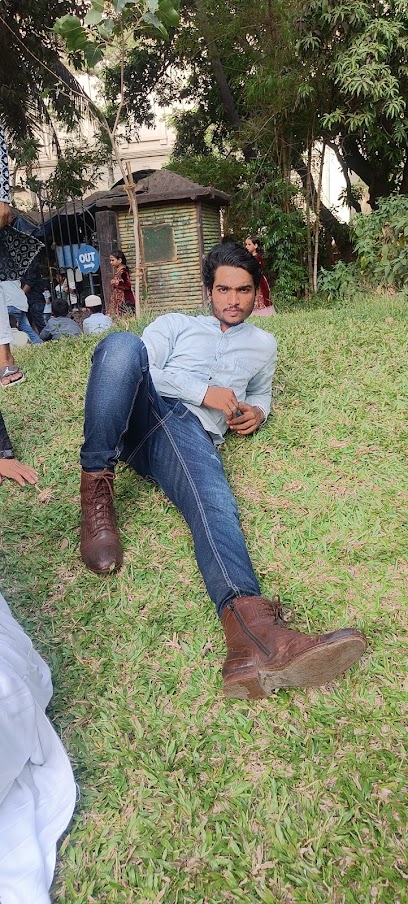
AHAMAD TENT AND FANCY STORE
Experience the vibrant culture of Nepal through unique fashion at AHAMAD TENT AND FANCY STORE in Namarjung.
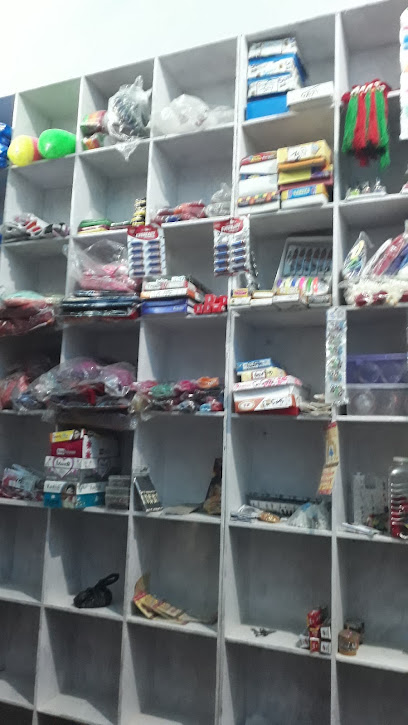
Upper Mustang Trek
Discover the mystical Upper Mustang Trek, an unforgettable journey through breathtaking landscapes and rich Tibetan culture in the heart of Nepal.
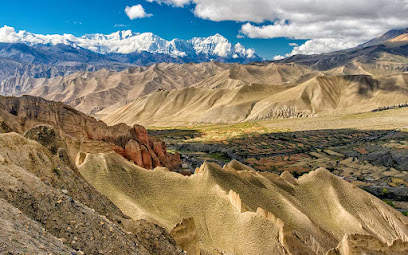
Mustang Eco Museum
Explore the rich heritage and ecological wonders of the Mustang Eco Museum, a hidden gem in the heart of Jomsom, Nepal.

Triti Boutique
Discover the essence of Nepalese craftsmanship at Triti Boutique in Namarjung, offering handcrafted treasures that celebrate local artistry.

Gina Burton
Discover the vibrant art of Batik clothing at Gina Burton, where tradition meets style in every handcrafted piece.

Fashion point Fancy Dress, nepal
Discover trendy youth clothing at Fashion Point Fancy Dress in Nawal-Parasi, Nepal, a vibrant destination for fashion-forward shoppers.

Marketing collection
Explore Etari's premier leather goods supplier, where tradition meets craftsmanship in beautifully crafted leather products.

Aabhash store
Explore Aabhash Store in Namarjung for authentic local crafts and souvenirs that capture the essence of Nepali culture and artistry.

उजीर चाैक
Explore the vibrant cultural hub of उजीर चाैक in Namarjung – where local flavors and community spirit come to life.

Suddhodhan 6 Bakuli Baazar
Discover the enchanting world of handcrafted jewelry at Suddhodhan 6 Bakuli Baazar, where tradition meets contemporary elegance in the heart of Nepal.

Smriti jewellers
Discover the elegance and craftsmanship at Smriti Jewellers in Namarjung, where tradition meets contemporary design in exquisite jewelry.

Padaul
Embark on a shopping adventure in Padaul, Nepal, where tradition meets style in a captivating shoe store experience.

Tara masala
Discover the essence of Nepal at Tara Masala, a charming general store in Namarjung offering local products and cultural treasures.

Essential bars & hidden hideouts
Krazy Gecko
Experience the vibrant spirit of Pokhara at Krazy Gecko, where delicious food and refreshing drinks meet a lively atmosphere perfect for all travelers.
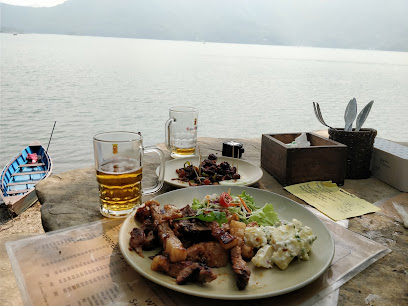
Cravend Restro and Bar
Experience the flavors of Nepal at Cravend Restro and Bar, where delicious food, refreshing drinks, and stunning mountain views await you.

KINGDOM RESTRO BAR & LIVE MUSIC (THAKALI BHANCHA GHAR)
Discover the essence of Jomsom at Kingdom Restro Bar & Live Music, where authentic Nepalese cuisine meets vibrant nightlife and live entertainment.
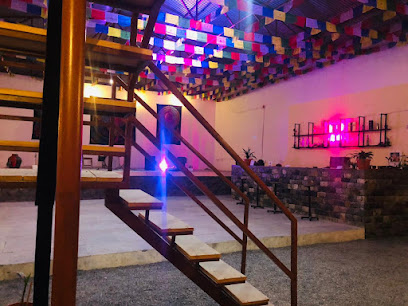
Rooftop guesthouse and restaurant
Discover breathtaking views and authentic flavors at the Rooftop Guesthouse and Restaurant in Surkhang, a unique blend of comfort and culture.
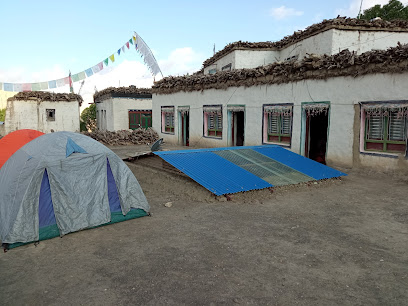
Lamahi Dang
Experience the local culture and vibrant social scene at Lamahi Dang, a lively bar in Namarjung with a diverse selection of drinks and snacks.
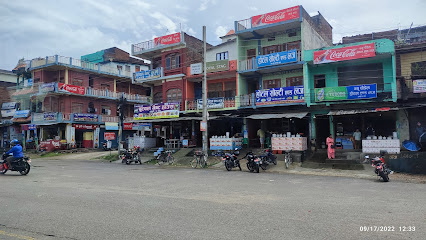
TT ministar
Experience the charm of TT ministar, a cozy bar in Sardi Khola, perfect for relaxation and mingling with locals after a day of exploration.

Deepak's cottage
Discover Deepak's Cottage in Lwang Ghalel, a serene bar offering breathtaking views and a taste of local culture amidst the stunning Himalayan landscape.

Bikram's madhira pasal
Discover the charm of Lekhnath at Bikram's Madhira Pasal, a delightful wine bar offering local and international selections in a cozy atmosphere.

Mamta
Discover Mamta, the vibrant bar in Namarjung offering a delightful mix of local beverages and lively atmosphere for every traveler.

Sumit giri
Discover the vibrant spirit of Namarjung at Sumit Giri, where delightful drinks and local culture blend seamlessly.

Kathmandu balaju
Experience the vibrant nightlife at Kathmandu Balaju, a lively bar in Namarjung offering a diverse drink selection and a welcoming atmosphere.

Vasandhara choki
Discover the lively essence of local nightlife at Vasandhara Choki, a vibrant bar in Namarjung offering drinks, music, and unforgettable experiences.

Rabin bhujel
Discover the charm of Rabin Bhujel, a cozy bar in Namarjung, offering a perfect blend of local drinks and warm hospitality for every traveler.

Man maiju chok
Discover the vibrant nightlife of Kathmandu at Man Maiju Chok, a lively bar offering local drinks and a friendly atmosphere.

Lungra achham
Discover Lungra Achham, a cozy bar in Namarjung, Nepal, where local flavors meet breathtaking landscapes for a unique travel experience.

Local Phrases about Mustang
-
- Helloनमस्ते
[namaste] - Goodbyeफेरि भेटौं
[pheri bhetau] - Yesहो
[ho] - Noहोइन
[hoin] - Please/You're welcomeकृपया
[krupaya] - Thank youधन्यवाद
[dhanyabad] - Excuse me/Sorryमाफ गर्नुहोस्
[maaf garnuhos] - How are you?तपाईंलाई कस्तो छ?
[tapailai kasto chha?] - Fine. And you?राम्रो छ। तपाईंलाई?
[ramro chha. tapailai?] - Do you speak English?तपाईं अंग्रेजी बोल्नुहुन्छ?
[tapai angreji bolnuhunchha?] - I don't understandमलाई सम्झिन्छैन
[malai samjhinchain]
- Helloनमस्ते
-
- I'd like to see the menu, pleaseकृपया मेनु हेर्न चाहन्छु
[krupaya menu hern chahanchu] - I don't eat meatम मासु खाँदिन
[ma masu khandin] - Cheers!चियर्स!
[chiyars!] - I would like to pay, pleaseकृपया भुक्तानी गर्न चाहन्छु
[krupaya bhuktani garn chahanchu]
- I'd like to see the menu, pleaseकृपया मेनु हेर्न चाहन्छु
-
- Help!मदद!
[madad!] - Go away!दूर हुनुहोस्!
[door hunuhos!] - Call the Police!पुलिसलाई बोलाउनुहोस्!
[polis lai bolaunuhos!] - Call a doctor!डाक्टरलाई बोलाउनुहोस्!
[daktar lai bolaunuhos!] - I'm lostम हराएको छु
[ma haraeko chu] - I'm illम बिरामी छु
[ma birami chu]
- Help!मदद!
-
- I'd like to buy...म किन्न चाहन्छु...
[ma kinn chahanchu...] - I'm just lookingम सिर्जना गरिरहेको छु
[ma sirjana gari raheko chhu] - How much is it?यो कति हो?
[yo kati ho?] - That's too expensiveत्यो धेरै महँगो छ
[tyo dherai mahango chha] - Can you lower the price?के तपाईं मुल्य कम गर्न सक्नुहुन्छ?
[ke tapai mulya kam garn saknuhunchha?]
- I'd like to buy...म किन्न चाहन्छु...
-
- What time is it?कति बजेको छ?
[kati bajeko chha?] - It's one o'clockएक बजे छ
[ek baje chha] - Half past (10)दस बजे सम्म
[das baje samma] - Morningबिहान
[bihana] - Afternoonदिउँसो
[diunso] - Eveningसाँझ
[sajh] - Yesterdayहिजो
[hijo] - Todayआज
[aaj] - Tomorrowभोलि
[bholi] - 1एक
[ek] - 2दुई
[dui] - 3तीन
[tin] - 4चार
[char] - 5पाँच
[pach] - 6छ
[chha] - 7सात
[sat] - 8आठ
[aath] - 9नौ
[nau] - 10दस
[das]
- What time is it?कति बजेको छ?
-
- Where's a/the...?...हरायो?
[...harayo?] - What's the address?ठेगाना के हो?
[thegana ke ho?] - Can you show me (on the map)?के तपाईं मलाई देखाउन सक्नुहुन्छ? (नक्सामा)
[ke tapai malai dekhaun saknuhunchha? (nakshama)] - When's the next (bus)?अर्को (बस) कहिले छ?
[arko (bas) kahile chha?] - A ticket (to ....)एक कोटी (लाई ... को)
[ek kotee (lai ... ko)]
- Where's a/the...?...हरायो?
History of Mustang
-
The Mustang region was once part of the Kingdom of Lo, which was established in 1380 by Ame Pal. The kingdom maintained a high degree of autonomy despite being a vassal state of Tibet. The walled city of Lo Manthang served as the capital, and it remains one of the best-preserved examples of medieval Tibetan architecture.
-
Mustang has long been influenced by Tibetan culture, religion, and politics. Tibetan Buddhism is the predominant religion, and the region is home to numerous monasteries, including the ancient Ghar Gompa and the 15th-century Thubchen Monastery. The close cultural ties with Tibet have shaped the unique identity of Mustang.
-
Historically, Mustang was a vital trade route between Nepal and Tibet. The region's location along the Kali Gandaki River facilitated the movement of goods such as salt, wool, and grains. This trade route contributed to Mustang's prosperity and cultural exchanges, which are evident in its rich heritage.
-
For centuries, Mustang was known as the 'Forbidden Kingdom' due to its inaccessibility and restricted entry to outsiders. It wasn't until 1992 that the Nepali government opened the region to foreign visitors, allowing the world to explore its hidden treasures and unique culture.
-
In 2008, Nepal abolished its monarchy and became a federal democratic republic. This political shift impacted Mustang, which had been ruled by a local king, Jigme Palbar Bista, who held the title of Raja of Mustang. Though the monarchy was officially dissolved, the former king remains a respected figure in the community.
-
Mustang is renowned for its vibrant cultural festivals, which offer a glimpse into the region's traditions and beliefs. One of the most significant festivals is Tiji, celebrated in Lo Manthang. This three-day event commemorates the victory of good over evil and features elaborate dances, rituals, and ceremonies performed by monks in colorful costumes.
Mustang Essentials
-
Mustang is located in the north-central part of Nepal, bordering Tibet. The nearest international airport is Tribhuvan International Airport in Kathmandu. From Kathmandu, you can take a domestic flight to Pokhara, which is the gateway to Mustang. From Pokhara, you have the option to fly to Jomsom, which is the main entry point to Mustang, or you can embark on a road journey via jeep or bus. The road journey offers a scenic route but can be challenging due to rough terrains.
-
Within Mustang, transportation options include local buses, jeeps, and motorcycles. Jeeps are the most common mode of transport for tourists due to the rugged terrain. Motorcycles can be rented in Pokhara or Jomsom for those looking for a more adventurous way to explore the region. Walking and trekking are also popular, especially for visitors interested in experiencing the natural beauty and cultural heritage of Mustang up close.
-
The official currency in Nepal is the Nepalese Rupee (NPR). Credit cards are accepted in some hotels and restaurants in Jomsom and Lo Manthang, but it is advisable to carry cash, especially in smaller villages and remote areas. ATMs are scarce in Mustang, so ensure you withdraw sufficient cash in Kathmandu or Pokhara before traveling to Mustang. Foreign exchange services are available in Kathmandu and Pokhara.
-
Mustang is generally a safe destination for tourists. However, it is always wise to take standard precautions. Avoid walking alone at night in unfamiliar areas and be cautious of your belongings in crowded places. There are no specific high-crime areas targeting tourists in Mustang, but staying vigilant and aware of your surroundings is recommended. Weather conditions can be harsh, so prepare adequately for cold temperatures and high altitudes.
-
In case of emergency, dial 100 for police assistance or 102 for medical emergencies. There are health posts and basic medical facilities in Jomsom and Lo Manthang. For serious medical issues, it may be necessary to be evacuated to Pokhara or Kathmandu. It is highly recommended to have travel insurance that covers medical emergencies and evacuation. For minor health issues, carry a basic first aid kit and necessary medications.
-
Fashion: Do dress modestly, especially when visiting monasteries and religious sites. Avoid wearing revealing clothing. Religion: Do respect local customs and traditions. Always ask for permission before taking photos of people or religious ceremonies. Public Transport: Do be respectful and give up your seat to elderly passengers. Don't eat or drink on public transport. Greetings: Do greet people with a 'Namaste' and a slight bow of the head as a sign of respect. Eating & Drinking: Do try local delicacies such as yak meat and Tibetan bread. Don't refuse food or drink offerings, as it may be considered impolite.
-
To experience Mustang like a local, visit the local markets where you can buy handmade crafts and traditional Tibetan goods. Engage with locals; they are often friendly and willing to share stories about their culture and history. Don't miss the Tiji Festival in Lo Manthang, a vibrant three-day event celebrated with traditional dances and rituals. For a unique experience, visit the ancient caves in Chhoser, which have been used as dwellings and meditation sites for centuries.
Nearby Cities to Mustang
-
Things To Do in Bandipur
-
Things To Do in Gorkha
-
Things To Do in Lumbini
-
Things To Do in Chitwan
-
Things To Do in Kathmandu
-
Things To Do in Patan
-
Things To Do in Bhaktapur
-
Things To Do in Nagarkot
-
Things To Do in Namche Bazaar
-
Things To Do in Lucknow
-
Things To Do in Patna
-
Things To Do in Varanasi
-
Things To Do in Kanpur
-
Things To Do in Darjeeling
-
Things To Do in Gangtok

